Washington State Drivers Test
1/320
There's no tags or description
Looks like no tags are added yet.
Name | Mastery | Learn | Test | Matching | Spaced |
|---|
No study sessions yet.
321 Terms
When riding at night, your bicycle must have a white headlight visible for
500 feet
A solid yellow line on your side of the center line means
do not pass
If you refuse to take a blood alcohol content test, you will lose your driver license for
at least 1 year
Yellow sign: man with shovel
Workers: Watch for people working on or near the roadway
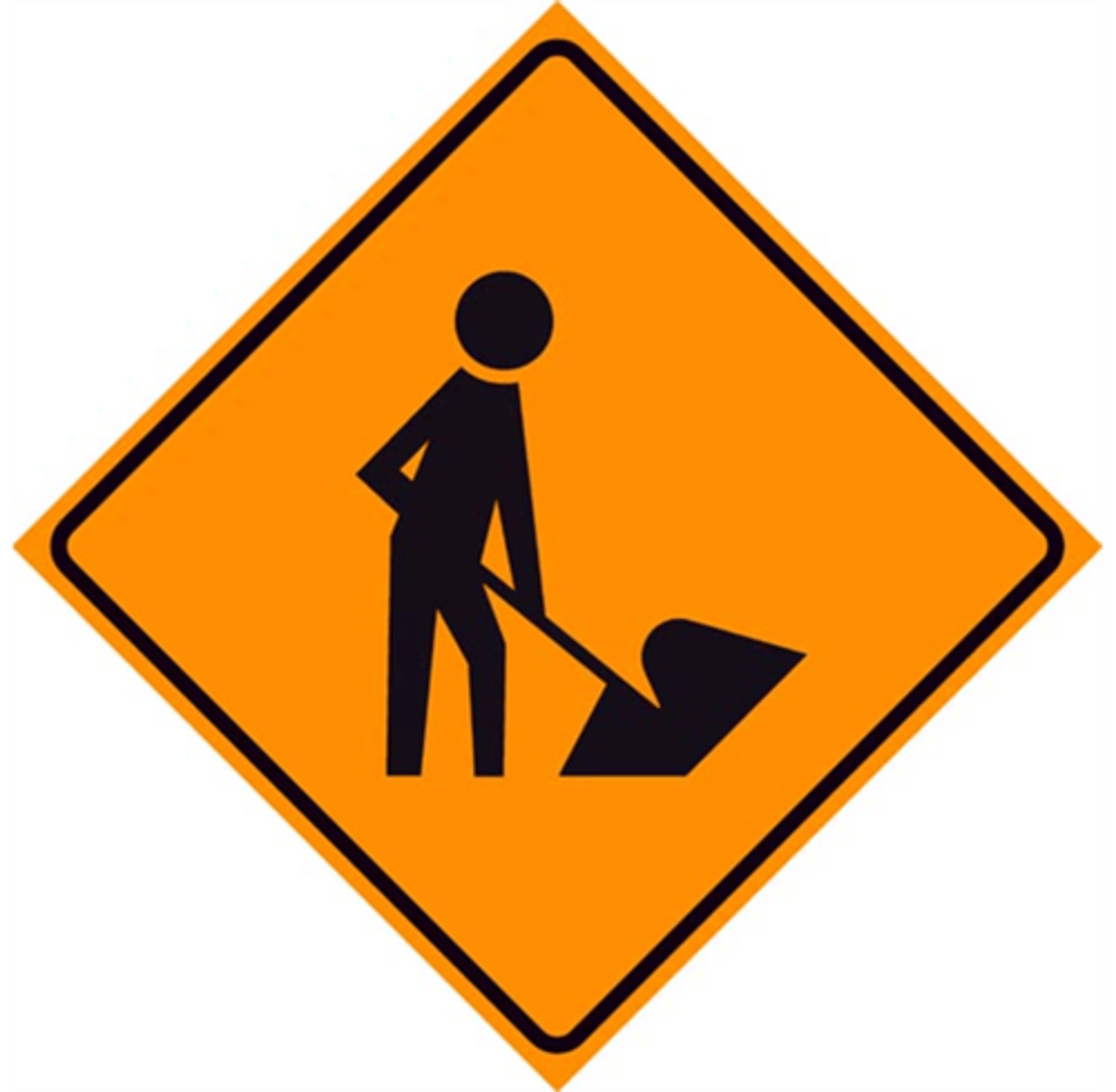
A yellow light that flashes on and off means
slow down and proceed with caution
Yellow Sign: Car with squiggly lines behind tires
Warning, slippery when wet

If you stop along the road at night
Turn on your emergency flashers and leave your low beams on
Yellow sign with a curved arrow and 35 mph
curve ahead, 35 mph or less recommended
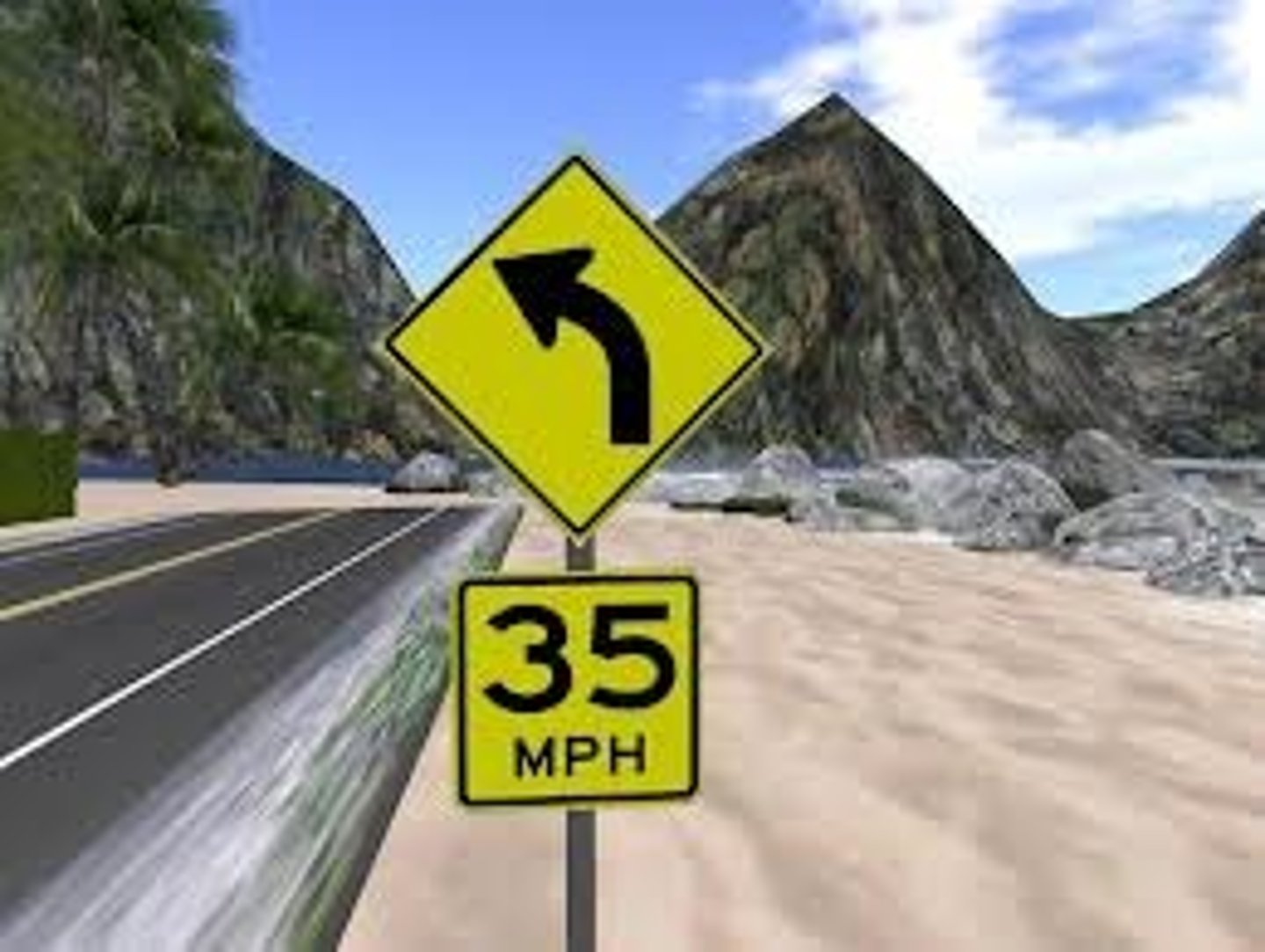
If you see side-by-side red lights flashing at a railroad crossing, you must
stop
You must dim your high-beam lights when within
500 feet of an oncoming vehicle
In WA State, a person is legally drunk when their BAC level is
at or above .08 percent
When in travel lanes on the roadway
don't stop for any reason, keep moving until you can safely pull off the road.
The correct way to use a freeway exit ramp is
don't slow down until you move onto the exit ramp
At an uncontrolled intersection, you must
slow down and yield to any vehicle in the intersection and to those coming from the right
When you see a school bus on a road with 2 lanes traveling in opposite directions, you must stop
if the red warning lights on the bus are flashing
the rule for stopping when you're near a bus
If you're on a two-lane road, both directions need to stop. If you're on a road with three or more lanes, you need to stop if you're traveling in the same direction as the bus. If you're traveling in the opposite direction, you can keep going.
no right turn
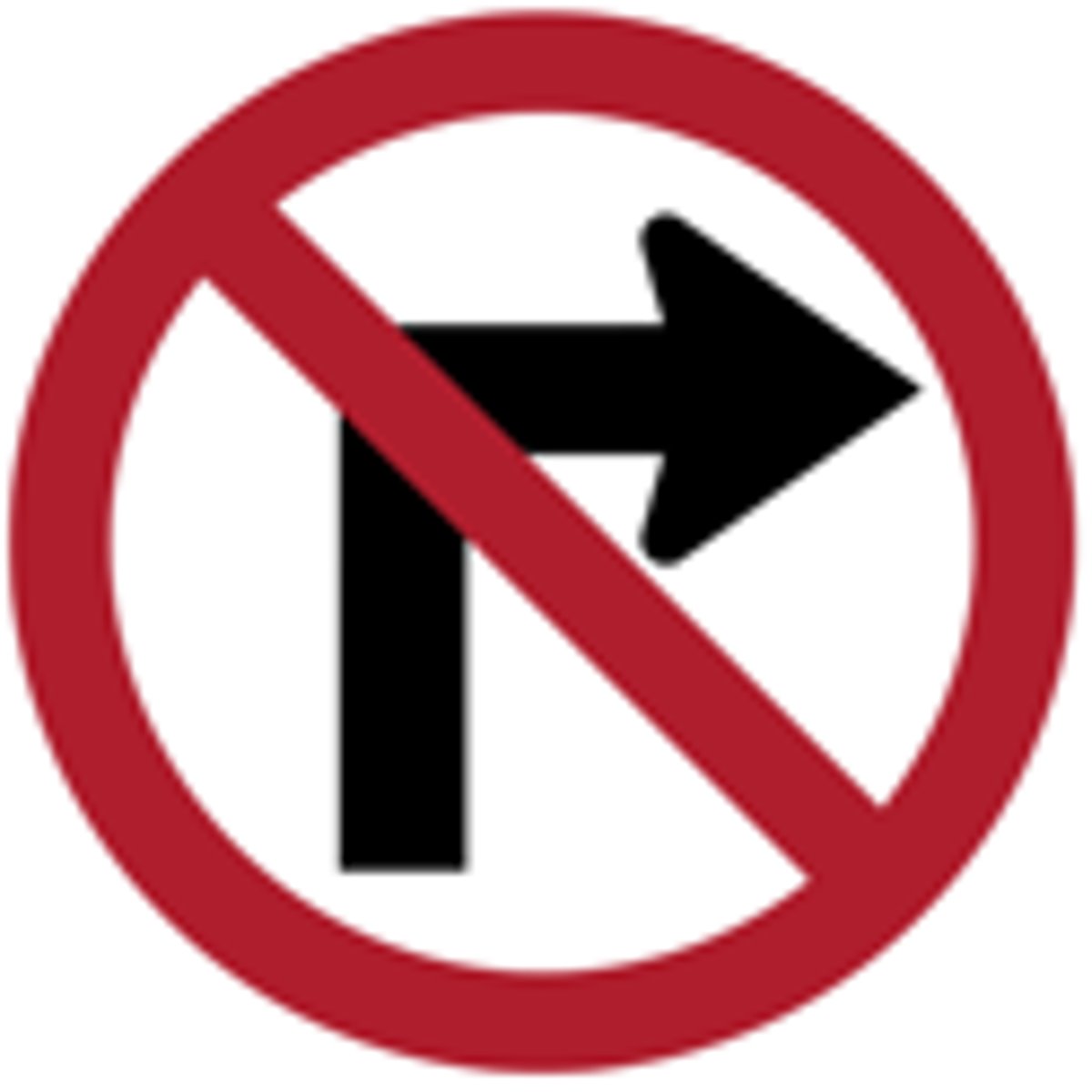
to avoid being in a truck or bus driver's blind spot and help them see, you should
avoid driving on either side and don't tailgate
if your brakes stop working, you should first
pump the brake pedal several times and try to build up brake pressure
When passing another vehicle on a road with 2 lanes traveling in opposite directions, you should
return to the driving lane when there's enough room between you and the vehicle you passed
a bicyclist who doesn't obey traffic laws
can be ticketed
yellow sign: Bottom has a median and then arrows on either side converging at the top
divided highway ends
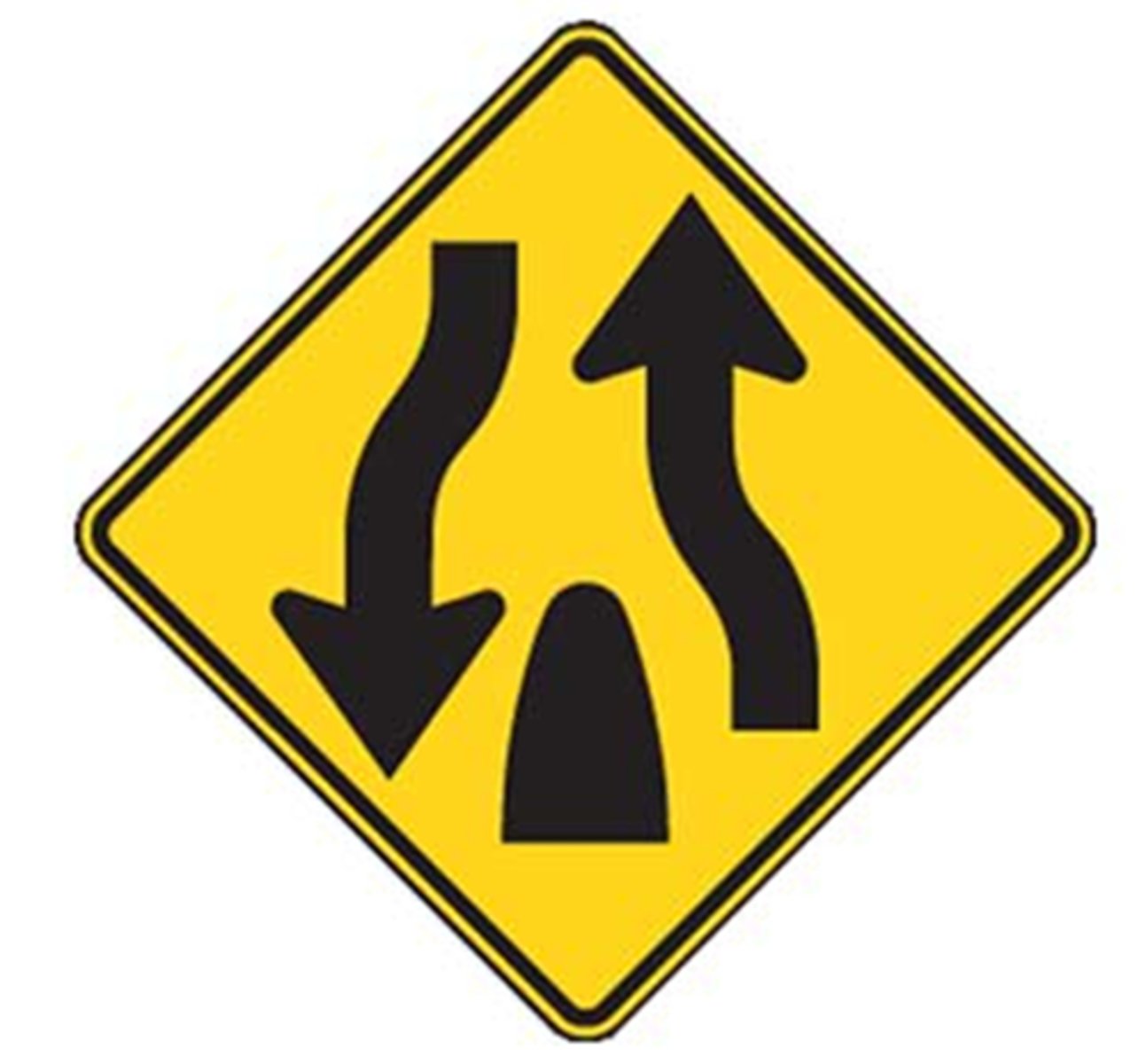
divided highway starts ahead sign
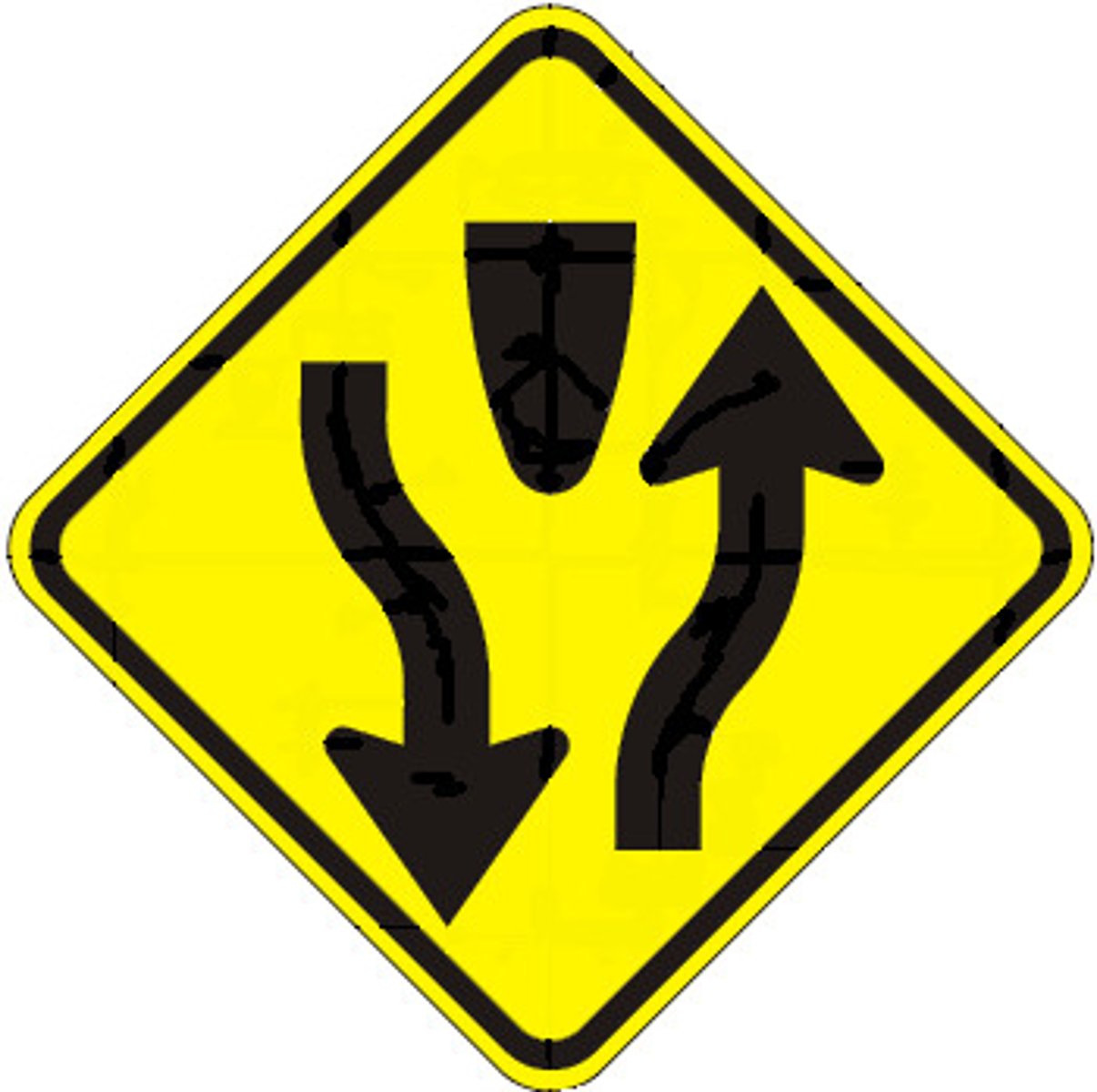
By law, your vehicle's lights must be turned on from
30 minutes after sunset until 30 minutes before sunrise
If you're going to turn left onto a 1-way street, you should complete the turn into
the lane closest to the one you came from
You may park or stop along the shoulder of the freeway only if
you have an emergency
On slippery roads, you should
slow down
On a road with 2 lanes traveling in opposite directions, slow-moving vehicles should pull over when safe to let others pass if
5 or more vehicles form a line behind you and it's unsafe for them to pass
Drivers entering an intersection to turn left
must not enter an intersection unless they can get through it without having to stop
Before you change direction, you must keep your turn signals on for at least
100 feet
To change lanes you should
signal, check your mirrors, check your blind spot in the direction you plan to move, and change lanes SMOG
The most important thing to remember in backing a car is to
look back carefully and yield to other vehicles and pedestrians
Yellow Diamond sign means
warning sign (caution)
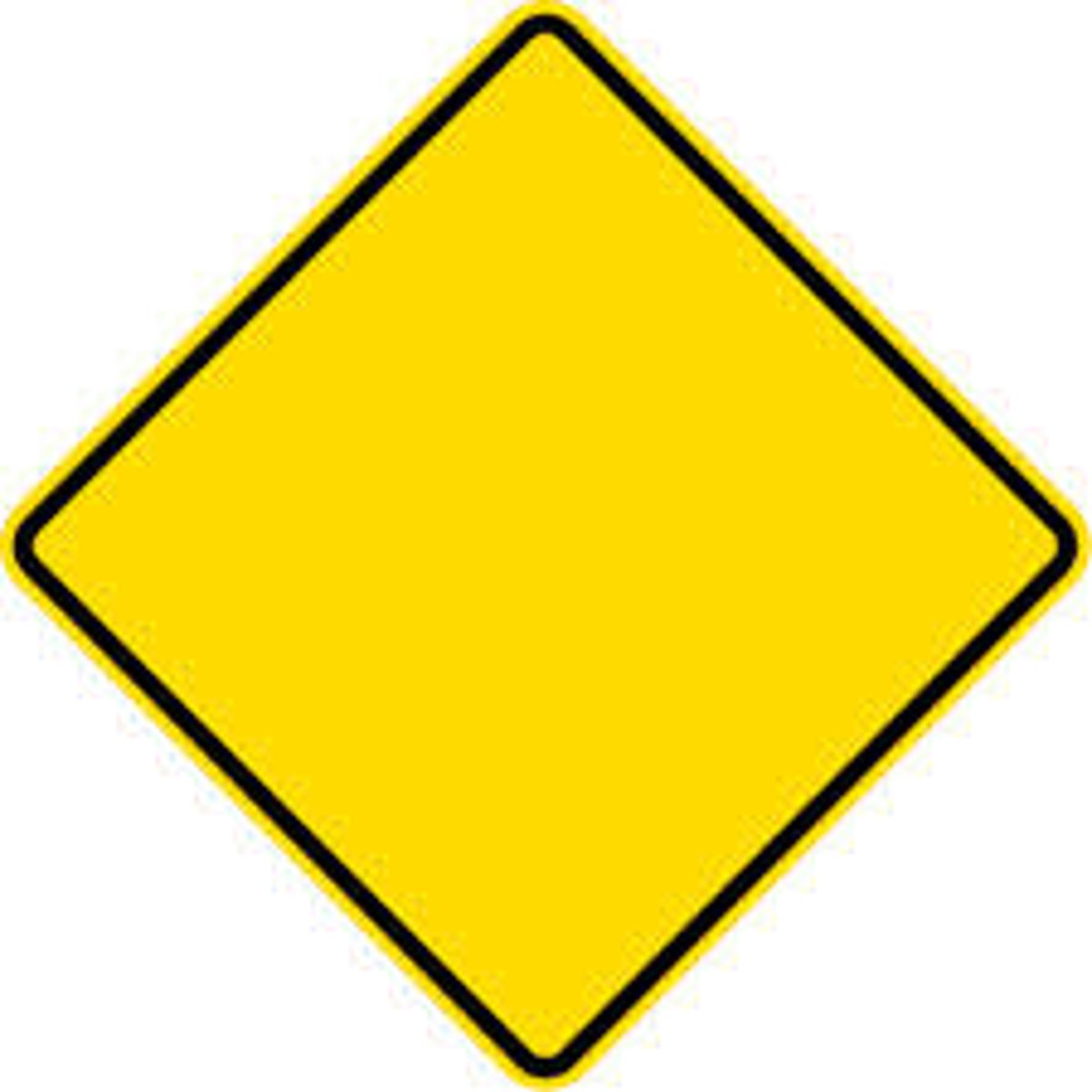
Don't park within how many feet of a fire hydrant
15 feet
When driving on a road with 2 lanes traveling in opposite directions
use the right lane except when you're legally passing another vehicle
If your car starts to skid, turn your steering wheel
in the direction you want the vehicle to go
When parking uphill with a curb, set the parking brake and
turn your steering wheel away from the curb
If there is an injury, a death, or $700 or more in damage to an 1 person's property, you must report accident to law enforcement officials within
4 days
The buyer of a vehicle must transfer ownership and registration
within 15 days from the date of purchase
At night, slow down and always
use high beams whenever there are no oncoming vehicles
When driving in fog
use your low beams
Generally, how many drinks of alcohol will the human body get rid of each hour
1 drink
At first conviction for driving under the influence of alcohol or any drug can result in a license suspension for at least
1 year
To be parked legally, a vehicle must be within what number of inches from the curb?
12 inches
What is the maximum speed limit on streets in cities and towns, unless otherwise posted?
25 mph
always allow enough room to safely stop in emergencies by staying at least
4 seconds behind the vehicle in front of you
What distance from a vehicle must you use your low beams?
300 feet of a vehicle you're following
Any time you want to merge with other traffic, you should
allow a gap of about 4 seconds for safety
To avoid rear-end collisions at higher speeds, you must maintain the following distance by using
the 4 second rule
railroad crossing
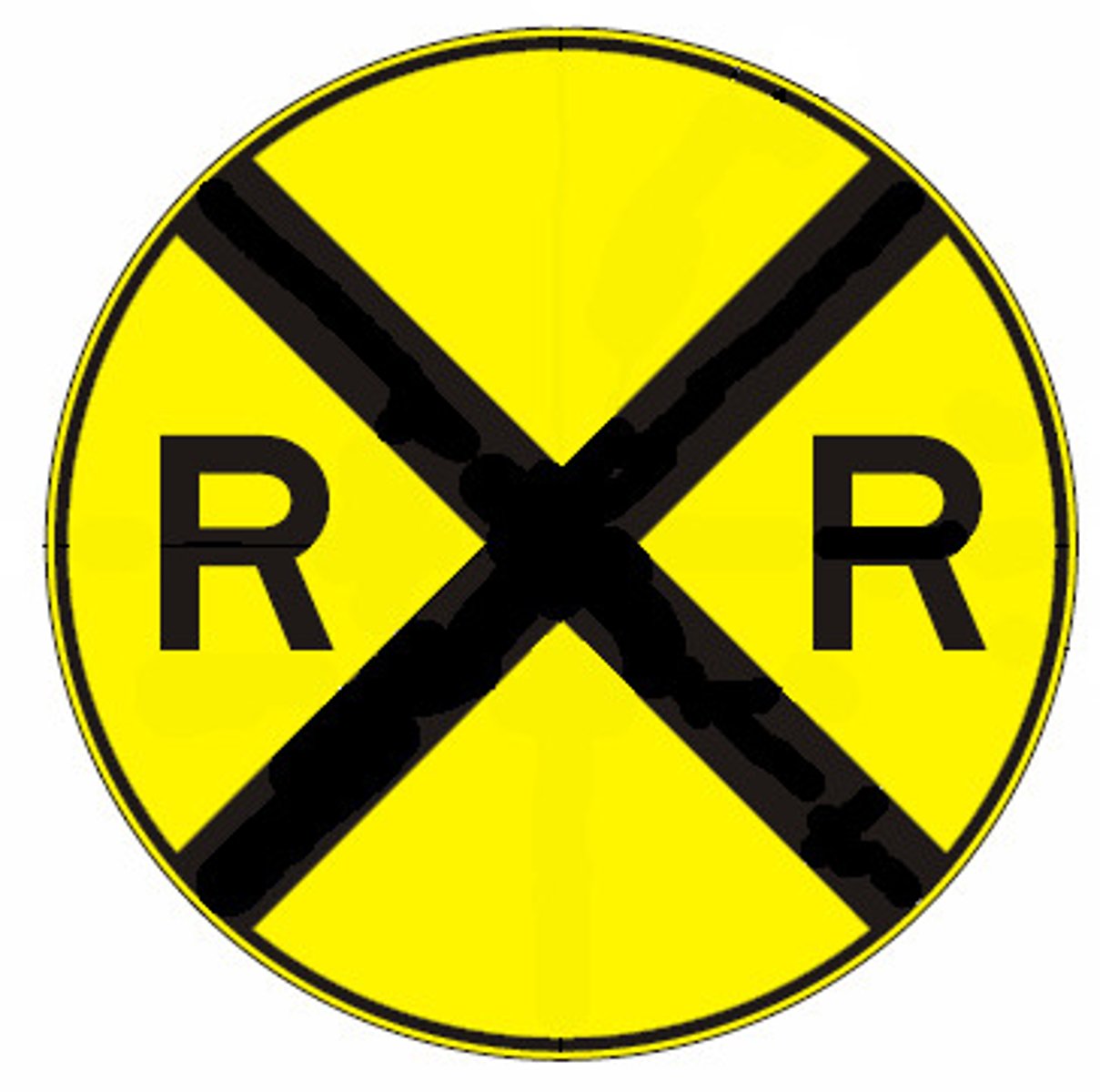
In Washington state, it is illegal _________ without wearing a seat belt.
to be a front seat passenger, to drive, to be a rear seat passenger, all the above
When driving at 55 mph, you will require __________ to pass another vehicle.
10 seconds
If a vehicle comes toward you with high-beams and blinds your vision, you must look _________ until the car has passed.
toward the right side of the road
a stop sign ahead

a crossroad ahead
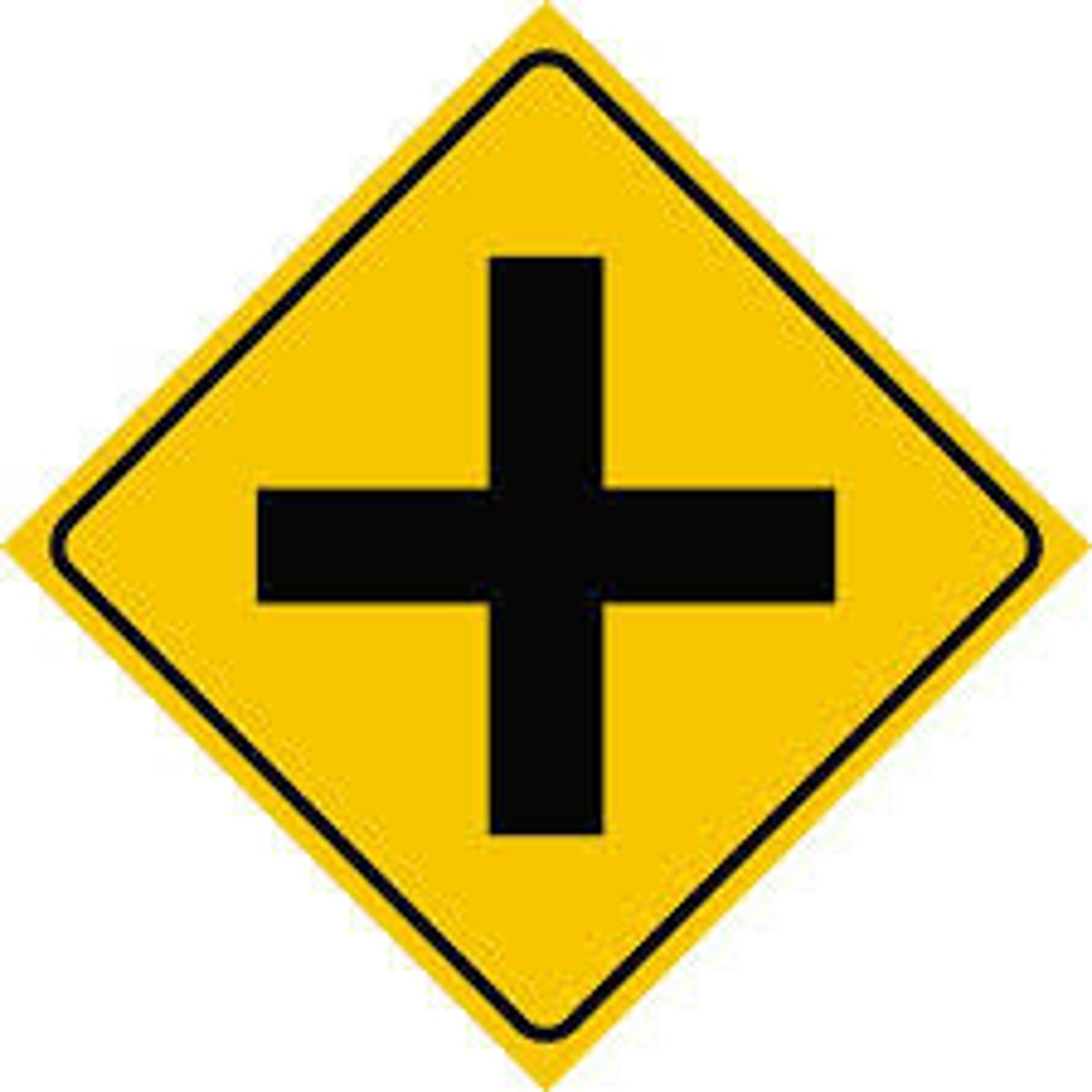
If your tire suddenly goes flat or blows out, you should first
hold the steering wheel tightly
An ideal hand position for holding the steering wheel during driving is
left hand between 8 and 9 o'clock and right hand between 3 and 4 o'clock
_________mark the left edge of one-way roads and separate traffic moving in opposite directions.
solid yellow lines
If you see a solid white line between lanes of traffic, you must
stay in your own lane
a hill ahead
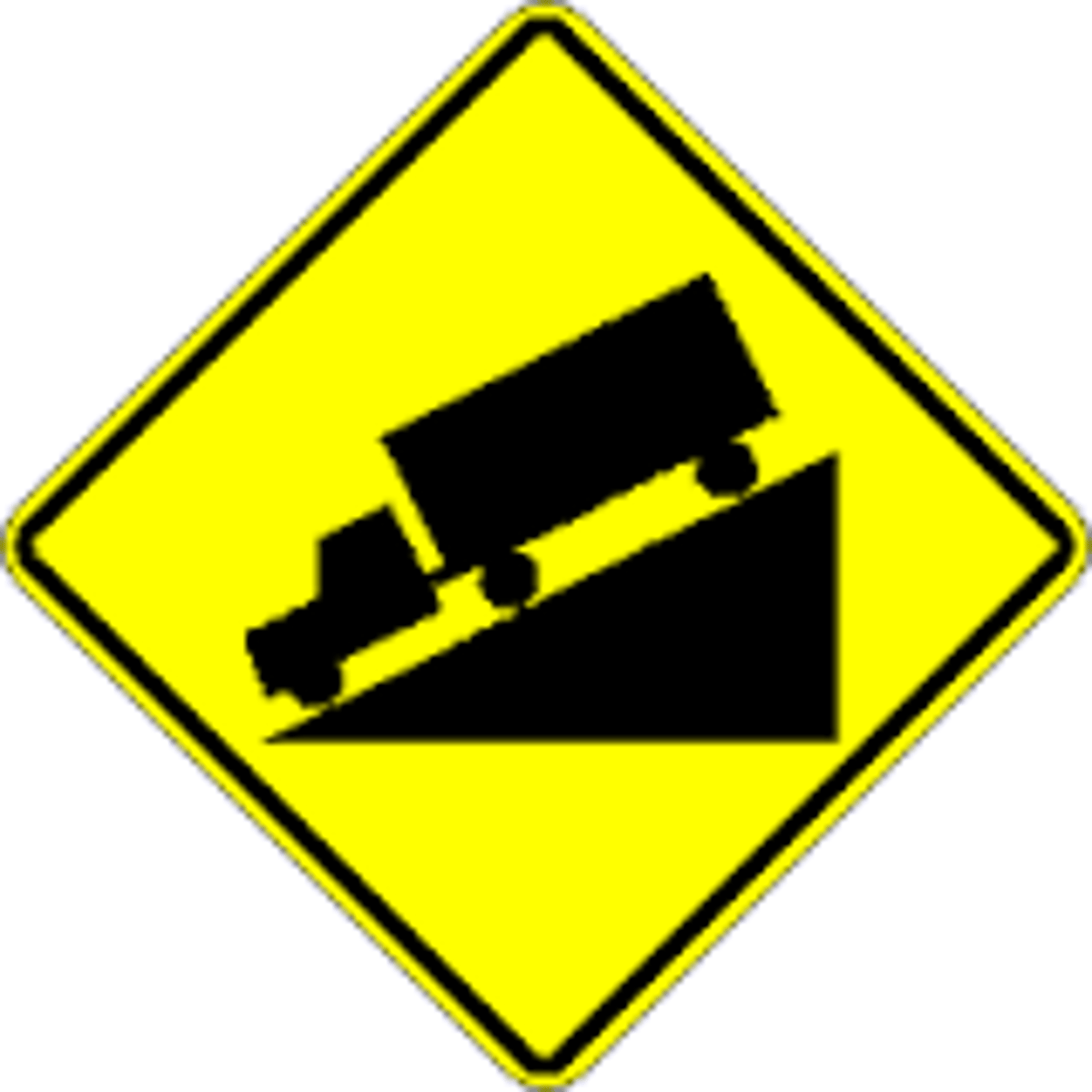
When you park your vehicle next to a curb facing uphill, set your parking brake and turn your steering wheel
away from curb
When you park your vehicle next to a curb facing downhill, set your parking brake and turn your steering wheel
toward the curb
When you park your vehicle on a hill with no curb, set your parking brake and turn your steering wheel
to the right toward the edge of the road
On some roadways, some lanes reserved as 'Transit' are used for
buses only
The primary purpose of the highway transportation system is to
move people and cargo safely and efficiently
risk factors in the HTS are contributed by
drivers, vehicles, and roadway environments
Traffic tie-ups and collisions are examples of
breakdowns in the HTS
What is the most common cause of most collisions?
driver error
What is the number one cause of death for teens?
driving accidents
When adjusting the seat the right foot should be positioned
Heel on the floor, ball of foot on brake
The Ten Model Driving Habits
are a set of habits that all drivers need and are an interdependent set of behaviors that protect drivers from an over accumulation of risk
The correct driver seating position is
Rear in seat, sit up straight, left foot on dead pedal, right foot on brake pedal heel on floor
A push-pull steering technique is used for
Making most turns and driving through curves
Aiming for targets will
help to keep the car straight in its travel path, help make accurate turns, and help to get your eyes ahead of the vehicle
A hand-over-hand steering technique is used for
Making sharp turns
When driving a vehicle with an automatic transmission, the left foot should be positioned
Firmly planted on the dead pedal
When you approach a vehicle, you should
Check the condition of the tires, for any fluids leaking under the engine, and check for any vehicle damage
How do you hold a key when approaching the car?
They hold it in their hand, so they don't lose it and can get in the car faster.
Why is it good practice to use headlights during the day?
So other cars can always see you, and you can see them
Where does one position head restraint in relationship the ones head?
Head level, so they don't get whip lash
What are the benefits a driver and passenger receive by wearing safety belts?
They are safer, they won't fly out of the car with one on, they'll stay behind the wheels, and it causes less injuries.
How do you make a smooth stop?
Let go of the gas, hover over the break, and slowly and efficiently push the break down
How should you hold your hands on the steering wheel while driving straight?
9 and 3 or 8 and 4; knuckles out, thumbs up, so the air bag doesn't break your hands, and you have more control of the wheel
How do you select a target and aim the vehicle accurately towards it?
Aim 1-2 blocks ahead, and aim the top of the steering wheel to the aligned target
What does it mean to "turn head before steering?"
Look before you turn at a stoplight. It's used to look for your target and get the car in proper place.
What is the "transition peg" for making a right turn and left turn?
Right turn- rear view mirror makes a straight line with the target
Left turn- left corner of windshield point toward the target
The purpose of traffic signs are
To regulate, to warn, to guide
A red circle and diagonal slash on a sign means that
The action is not allowed
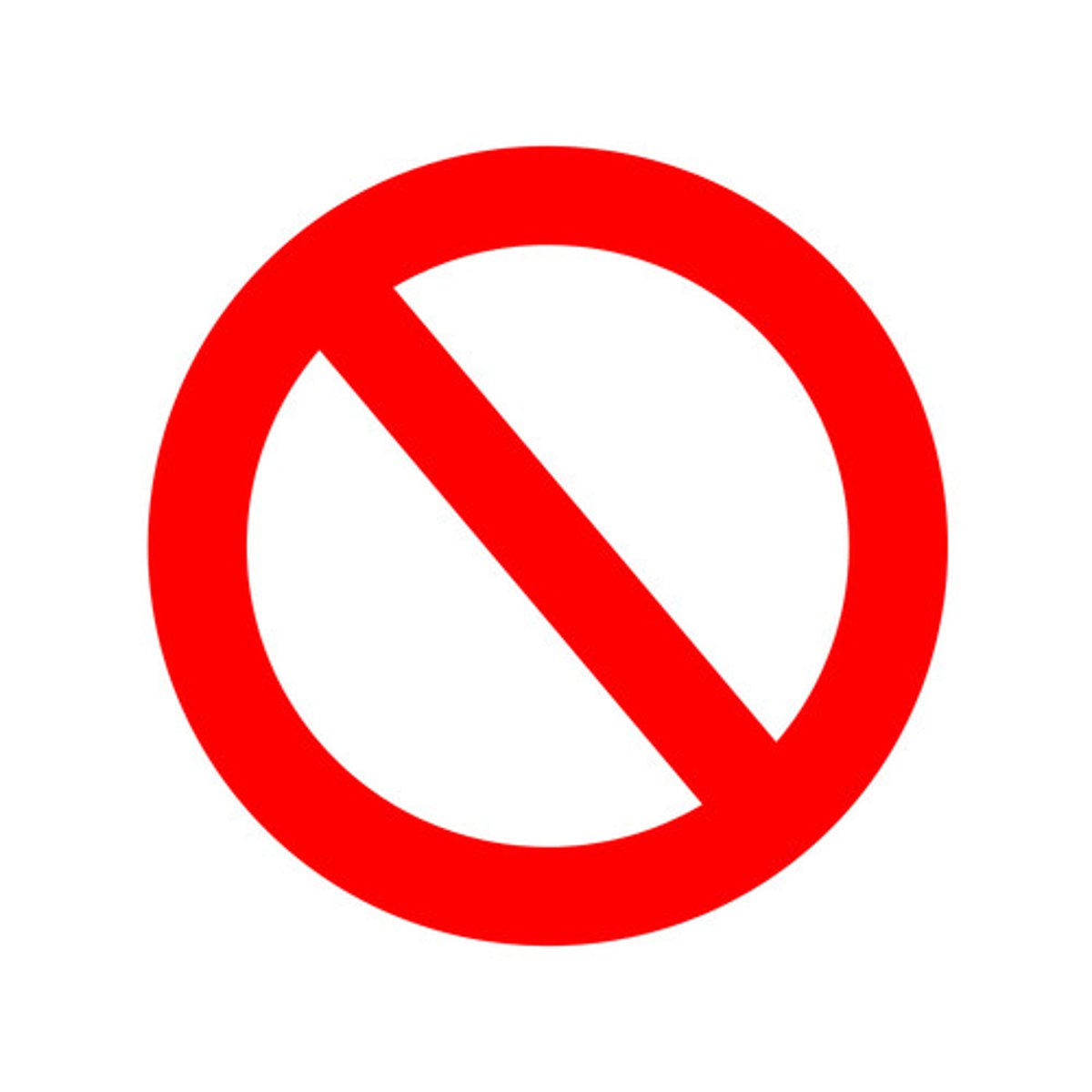
A sign with an orange background in a diamond or rectangular shape indicates a
Construction zone
Your traffic light changes to yellow as you approach an intersection. In most cases, what action should you take?
Make every reasonable effort to stop.
School zone speed limit
20 mph
What does yielding mean?
Proceed with caution. If cars are coming, stop to them.
What's the significance of a broken (dashed) yellow line?
You can cross it but get back as soon as it's safe and when your cars passed
When you are driving in a school zone, how do you know when you can speed back up to the street speed limit?
When there's an end of school zone sign, and you pass it, or when there's another speed limit sign, and you pass it
When seated behind the steering wheel you cannot see the pavement directly to the front, rear and sides of the car. How much of a line-of-vision blind area do you have to the front of the car?
1 car to the front
How does the use of reference points help you overcome the optical illusions created by the blind area?
So you know how far away from the curb or line you are
What's the Standard Reference Point for the Right Side Limit?
Center of the hood to the line
What's the Standard Reference Point for the Front Limit?
Line up bottom of mirrors with street/line
What does the "oil pressure light" warn you about?
Something's wrong; pull over and check it
What does the "brake light" warn you about?
Brake isn't working well